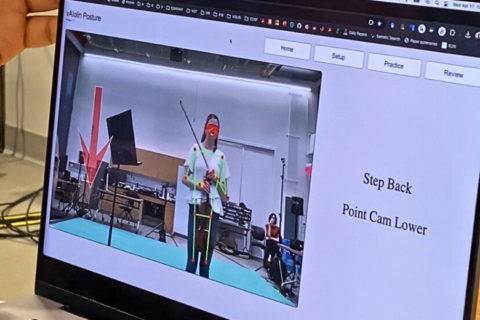This article was republished with permission from WTOP’s news partners at Maryland Matters. Sign up for Maryland Matters’ free email subscription today.
This content was republished with permission from WTOP’s news partners at Maryland Matters. Sign up for Maryland Matters’ free email subscription today.
Maryland Transportation Secretary Pete K. Rahn said critics of the state’s plan to widen the Capital Beltway and Interstate 270 are “putting their heads in the sand.” And he vigorously defended the Hogan administration’s decision to engage private sector firms in the design, funding and construction of the highway projects.
Rahn made his comments in a wide-ranging interview with Maryland Matters in Annapolis this week, amid growing pushback from elected leaders in Montgomery and Prince George’s counties and a significant public outcry.
At a town hall rally on Sunday, Montgomery County Executive Marc B. Elrich (D) called the state’s public-private partnership plan “seriously wrong,” “stupid” and destined to fail.
Rahn sharply rejected Elrich’s claims.
“To say [that] trying to deal with the cars that are already there is ‘stupid’ really is putting your head in the sand and wanting to avoid the truth,” he said. “Anyone who is attempting to block this is hiding from the facts.”
As Rahn and Gov. Lawrence J. Hogan Jr. (R) see it, traffic in the Washington, D.C., suburbs is hurting the state’s economy, putting Maryland at a competitive disadvantage with Virginia.
Rahn called Virginia “a “pioneer” in the use of so-called P3 projects, in which private-sector firms provide upfront costs in exchange for the right to charge tolls on express lanes for five decades, and perhaps longer.
Maryland has pledged – and federal law requires – that the number of toll-free lanes will not be reduced.
Tolls will be set by the operator and will fluctuate to keep traffic flowing.
“Some of the [protest] signs that I’ve seen — ‘trains, not lanes’ — it’s a false choice,” Rahn said.
“We have no money to build roads or more transit. We don’t have it.”
Local political leaders, the secretary said, have too narrow a constituency to be able to make wise policy choices on interstate roads like the Capital Beltway and I-270.
“Interstate highways are meant for interstate commerce and interstate travel, and we have to accommodate this travel and commerce that needs to take place,” he said.
“Council people are elected from a confined area. Even a county executive is elected from the confines of the borders of their county. We are having to make decisions that are for the state and incorporating the effects of all of this into our region.”
Rahn also criticized Carol S. Rubin, the Montgomery County Department of Planning’s coordinator for the I-495/I-270 Managed Lanes Study.
Rubin raised a laundry list of concerns about the state’s plans in a memo to the Maryland-National Capital Park and Planning Commission. She also accused MDOT of not respecting the expertise of local planning experts and of not providing important information.
Rubin spoke at a town hall, attended by more than 700 people in Silver Spring on Sunday, during which she expressed many of her concerns and frustrations.
“I find very interesting what she’s been saying, since she’s supposed to be a cooperating agency representative on our [National Environmental Policy Act] process,” said Rahn. “And I frankly think it’s very unprofessional what she’s been doing. And she’s also been inaccurate in a number of her statements.”
Rubin wrote that it is “unacceptable” that none of the state’s seven final alternatives for reconfiguring the Beltway and I-270 include mass transit, but Rahn did not elaborate on which of her statements he found to be “inaccurate.”
While the firms that bid on the right to build Maryland’s express-toll lanes will make design proposals to the state, Rahn said, it’s not likely that a dedicated bus-lane will be included in the final plan.
“We are not envisioning a dedicated lane for buses only,” he said. “But allowing public agency transit vehicles to use the express toll lanes is something that’s on the table. Providing to them a free-flowing access is significant.”
Rahn said he expects the state’s contract with the concessionaire — the construction and financing firm — will include a requirement that variable tolls be set in a manner that keeps traffic flowing at 45 miles an hour.
Other highlights from the interview:
Rahn poured cold water on Elrich’s proposal to add two reversible lanes to I-270 using existing right-of-way, at much less cost and without a P3.
“We looked at that… and we couldn’t come with a solution that met all of the safety conditions that you have to have on an interstate,” he said.
“[Building] two reversible lanes today is a fair solution for today. But as you can see the growth that is occurring in upper Montgomery County into Frederick, there is huge development that is going on within that area. … [Elrich’s plan] ignores the future. It’s a partial solution for today. It’s not the solution for tomorrow. It’s just not.”
Rahn also rejected Elrich’s suggestion that any fix start at “the big bottleneck,” the American Legion Bridge.
“From an engineering standpoint it would be very costly to try to add onto it,” he said. “We are leaving the option open to the proposers. If they have a way of widening it, we’re open to it. But our calculations are it would be expensive.”
Rahn said there are “issues” with the proposal to widen Interstate 270 north of I-370, where the highway narrows to two lanes, creating regular backups northbound.
“The amount of traffic that is on that roadway today is not sufficient to pay for the cost of the expansion of 270 up to Frederick,” he said.
In addition, “we are having to undertake a separate environmental study and there are features up there, in the Monocacy Battlefield area and features like that along the way, that really put it into a much different environment than the corridor that we’re in that’s already built out.”
Rahn said there is no guarantee that motorists on the I-495 express-toll lanes will be able to exit onto crowded state roads, like Georgia Avenue and New Hampshire Avenue, that cross the Beltway.
“I can’t answer that question,” he said. “And it’s not because the answer would be offensive to somebody. It’s because we don’t know what the developers will bring within their proposals as to how they will move traffic off of the express toll lanes.”
“The concessionaires will model their design and they will be making decisions about access points and what will add traffic versus how much it’s going to cost to address the construction. Some of these massive flyover interchanges [cost] hundreds of millions of dollars, and there’s a question about would that cost be recoverable or are there less impactful ways, and I believe there are less impactful ways.”
Rahn scoffed at the suggestion, expressed by many of the residents who attended Sunday’s town hall in Montgomery County, that the reconstructed Beltway and 270 include a bike lane.
“High-speed traffic like that is really not a place a bike should be,” he said. Plus, “you need right-of-way for that, and right-of-way is precious in here.”
Rahn said taxpayers will not be on the hook financially if a concessionaire fails. If that happens, he said, the firm will lose the money it invested — its “equity stake” — and that bondholders who funded the rest of the highway upgrade will “reconstitute” the project in order to recoup as much money as they can.
“There have been three, that I’m aware of, that have gone bust, and they’ve all functioned [this way],” he said.
“At no point in any of this is the state on the hook for any of it. Zero. If it fails, the protection we have is these bondholders are going to take it over because they’ve got to get something out of it. So they will continue to operate the toll road and if they can operate it [at a profit], they’ll continue to operate it. If they see it’s a money loser for them, they will sell the asset to another toll operator at a discount.”
In the final analysis, Rahn said, the decision to widen 270 and the Beltway is driven by the region’s worsening traffic, the state’s inability to fund construction itself, and the benefits of having the private sector being on the hook for maintenance of the two roads, freeing up state funds for other projects.
“270 and 495 are old interstates that have really reached the end of their useful life,” he said. “We have 165 structures — culverts, bridges, all these things — within this corridor, and they need to be replaced. Our estimated cost on this is $1.7 billion.”
“We don’t have $1.7 billion,” he continued. “That means we’re going to see more potholes. We’re going to see more signs of an old roadway. The great thing about the P3 is it’s going to replace the existing lanes too. We’re talking about an entirely new roadway, not just two new lanes.”
Rahn said corporate executives have told him they won’t move to suburban Maryland because of the region’s traffic woes.
“If we continue to keep our head in the sand, we will find the day that choices of significant employers will just simply say, ‘Virginia is a better place to operate than is Maryland.’ And I think transportation will be will be one of the significant factors in their choice of where they’re going to operate.
“We can head this off. We can address this. But we have to do it now.”







